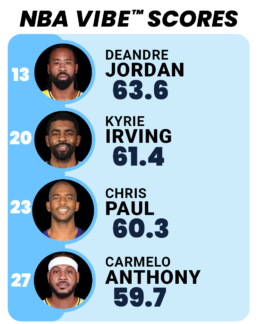Impact Investing is Much More Than ESG Metrics

Share
Impact Investing is Much More Than ESG Metrics
By Ken Reed
ESG (Environmental, Social, Governance) has become a big part of the lexicon in the world of investing.
In fact, assets under the category ESG are poised to reach $41 trillion by the end of this year, according to Bloomberg Intelligence estimates. (https://bloom.bg/3ODgGtL)
However, there is some confusion when it comes to ESG. ESG is the term given to a variety of baseline metrics that attempt to measure the environmental, social and governance activities of companies.
Where the confusion comes in is that ESG is often used interchangeably with the term impact investing.
ESG and impact investing are certainly related but there is a different level of commitment and activity between a company who simply uses ESG as a measurement tool and a company that is actively doing socio-cultural and/or environmental impact work.
Impact investing is actually the evolution of ESG.
Impact investors want to know what a company’s total impact on society is. True impact companies add value to society in multiple ways, and work for the benefit of all stakeholders – customers, employees, shareholders and communities.
Impact investors are interested in a given company’s true cost of doing business, which considers the societal and environmental impact of a company’s operations. It includes negative impacts such as air and water pollution, excessive carbon dioxide output, unfair or illegal labor practices, safety issues, etc.
That said, it’s also important to stress that along with positive social/environmental impact, impact investing requires a strong financial return for investors. By definition, impact investing is an investing approach that intentionally seeks to produce both positive social and environmental impact and a competitive financial return. It’s a level beyond the use of basic ESG metrics.
Warren Buffett once said, “Good profits simply are not inconsistent with good behavior.”
He was right. It turns out doing good is also good business.
And that’s what impact investing is all about.
Ken Reed is a Senior Communications Advisor at CoPeace. As a forward-thinking holding company, CoPeace is building a portfolio of carefully selected for-profit companies with measurable social and environmental impact. To learn more about impact investing, check out CoPeace’s Intro to Impact Investing.
CoPeace Launches New Capital Campaign on SVX US Innovative Impact Investing Platform
DENVER (MAY 09, 2022) – CoPeace, PBC, a diversified impact holding company, and SVX US, a nonprofit, diversified impact financial services firm announced today that the SVX impact investing platform will host CoPeace’s new $3 million capital campaign, a Rule 506(c) Preferred Series A offer for accredited investors.
CoPeace is building a portfolio of carefully selected for-profit companies with measurable social and environmental impact. This is the company’s first capital campaign targeting accredited investors, following a series of equity crowdfunding campaigns designed to democratize the investing process.
“We are excited about launching our new capital campaign on the SVX platform, for multiple reasons, but foremost are the shared mission alignment and the ease of use for investors to participate,” said Craig Jonas, CoPeace founder and CEO. “I have personally invested through the SVX platform which gives me great confidence that this will be an excellent fit for CoPeace as we keep the fundraising momentum going following our successful crowdfunding campaign, and over $3.5 million raised to date.”
SVX is a nonprofit organization registered with securities regulators as an Exempt Market Dealer (EMD). SVX has partners and operations across Canada, as well as in the US and Mexico and provides a suite of services enabling impact across a variety of sectors for investors, organizations, funds, and enterprises. The SVX US platform is a partnership of Cutting Edge Capital and SVX Canada.
“SVX is thrilled to bring the CoPeace offering onto the SVX US platform,” said Kevin Taylor, Associate Director, SVX Canada. “CoPeace’s mission to democratize investing while positively impacting society and the environment aligns perfectly with our vision at SVX. SVX US makes it easier than ever to invest in private market offerings that deliver meaningful change alongside the potential for financial returns. We’re excited to make impact investing accessible to all investors who are increasingly interested in aligning their investments with their values.”
SVX US is user-friendly, featuring detailed issuer profiles, a transaction engine, and capacity to make debt and equity investments across a range of impact areas including climate, food, health, equity, housing, and community real estate.
“CoPeace has been a longtime client and partner with Cutting Edge, which is exactly why we’re pleased to continue our relationship by launching their offering on the SVX US platform,” said John Katovich, Co-Founder, SVX US and Principal at Cutting Edge Capital. “Impact-focused investors have already shown their willingness to invest on SVX US and have expressed a strong interest in returning to find more like-minded issuers such as CoPeace. Cutting Edge has long been entrenched in the impact and alternative investments space, and we are committed to supporting a thriving impact investor community. We look forward to supporting CoPeace’s capital raise on the SVX US platform.”
CoPeace and SVX share a common vision: a world where all investments have a positive impact. Both companies are working to help organizations and investors match money with meaning.
###
About CoPeace
CoPeace is a forward-thinking holding company, building a portfolio of carefully selected for-profit companies with measurable social and environmental impact. CoPeace is democratizing the investment world by allowing everyone, not just wealthy investors, to invest in private impact companies via its holding company structure. In addition, CoPeace provides a variety of consulting services to organizations demonstrating positive social or environmental impact.
As a designated Certified B Corp and a public-benefit corporation (PBC), CoPeace is committed to acting morally, ethically and responsibly in regard to society, the environment, the natural world and the world at large
To learn more about CoPeace and how you can grow your money for good, visit http://copeace.com.
About SVX US
SVX US makes it easy for enterprises, including private issuers, CDFIs, nonprofit organizations, and funds, to connect with impact investors in a simple and automated way. The organization operates an online impact investment platform with campaign preparation support, detailed profiles, automated transaction and subscription document processing, and capacity to deploy investments across security, investor, and offering types, from DPOs to Reg D to nonprofit and co-op offerings. SVX US also offers a range of referral partner support, including legal, marketing, and capital advisory services. SVX US is a partnership of Cutting Edge Capital and SVX Canada.
For more information on SVX US, please visit https://svx.us.com/.
5 Ways To Improve Your Digital Marketing Game in 2022
It’s 2022. We live in a digital age. And when every business uses digital channels for marketing — how do you stand out from your competition? How do you catch the eye of your ideal clients or customers in the crowded online space? How do you create authentic messaging that will resonate in all the right ways, translating into super fans and, ultimately, increased revenue?
Start with strategy. By creating purposeful content, you’re five steps ahead of most of your competitors. Here’s how to do it.
A two-pronged approach: build relationships & boost sales
There are so many people doing great work in the world, solving problems & offering creative solutions. There are a few things you can do to help your business stand out from the crowd & help to move your marketing from good to great: use a two-pronged approach to 1) build relationships and 2) boost sales.
Relationships, baby
Nobody loves buying from a business whose only goal is to sell, sell, sell. When you start by building authentic, long-term, loyal relationships with your current and potential customers or clients, you set the tone for future sales. Make them fall in love with your brand, your ethos, and the way you do business. Because we all know that making a single sale feels good — but establishing an ongoing relationship that results in multiple sales is great.
Sell the life transformation (not your product or service)
You can’t focus solely on relationships — you’ve got to sell your services or products, too. Think about problem-solving ahead of dollar signs when it comes to selling. People want to buy a solution. A life transformation. They care about themselves (a lot more than they care about making money for your company). It’s all about positioning. And when you crack the code of how to position your offer, that’s when the magic happens.
5 ways to “up” your digital marketing game
If your digital marketing game isn’t up to par, a complete overhaul can feel daunting. It’s okay to start with baby steps — upgrading one thing at a time — to move toward your goals. By trying one thing at a time, you can test what works best for you and your company — and you’ll have a concrete measurement of success.
Here are 5 things you can do to escalate your digital marketing success.
1. Develop a monthly/quarterly content strategy
Map out buckets of content topics by month or quarter that you’d like to focus on. Organize and build your content strategy into a spreadsheet — and stick to it! Make sure you shoot for a doable volume of work and that you can divide the content into various mediums (more on that later) that can be executed by a pro in that area. Decide who will do what, when, and stay on track. Because having a strategy that you never use is, well, worthless.
2. Create the ultimate buyer’s journey
Many business owners and executives have a blind spot when it comes to their own customers’ journey. When you’re really close to something (i.e. your services, products, or offers), it can be hard to put yourself in a brand new customer’s shoes and decide if the flow of their journey makes sense. Pretend you know nothing about your brand/business. What would a cold lead want to know? How do you explain your offer? Make sure to be clear over clever or cute. Counter their objections. Provide social proof. Make them fall in love with the life transformation you’re selling — from beginning to end of their experience getting to know you/your brand/business.
3. Vary your content medium (social media, blogs, videos, podcasts, etc.)
The human brain gets bored really quickly. They say that we have the attention span of a goldfish — 5 seconds. We like change, variety, and surprises. Make sure you publish content for your digital audience in multiple mediums to keep your audience on their toes and engaged in your content.
4. Focus on customer service
Don’t forget that there’s a human on the other side of every screen. If you rely on automations or AI to service your customers — news flash – they’re going to notice. And chances are…they aren’t going to love it. Be human. Admit mistakes. Be transparent. Offer to fix issues/problems. Just be nice. It’s highly underrated.
5. Assess, tweak, update, and refine your content monthly/quarterly
After you put your digital marketing to work — make sure you don’t “set it and forget about it.” Ads, websites, blogs, emails, videos, podcasts all need to be tweaked, updated, and refined from time to time. Make sure you’re staying relevant — and conscious of current events and how your marketing might land on certain groups during certain times. Make a plan to review and optimize existing content plans at least bi-annually, if not quarterly. It’s surprising how quickly things can become outdated or appear (even if unintentionally) offensive.
Digital marketing is here to stay. And if you’re looking for ways to improve your digital marketing — you’re already ahead of the game! Remember to start with strategy and build from there. Keep your audience at the forefront of your positioning & language. Whenever possible, put yourself in their shoes and see if your offers resonate with someone unfamiliar with what you do.
Lindsay Hope is a copywriter and marketing strategist with CoPeace. As a forward-thinking holding company, CoPeace is building a portfolio of carefully selected for-profit companies with measurable social and environmental impact. To learn more about impact investing, check out CoPeace’s Intro to Impact Investing.
The Anatomy of a Highly Connective, High-Converting Email
Share
The Anatomy of a Highly Connective, High-Converting Email
Part of a series on effective digital communication
By Lindsay Hope
As the year 2021 comes to a close, there’s a lot of marketing lessons to glean from the extended pandemic world we’re living in. For those of us in the small business digital space, one of the top takeaways is: Never underestimate the power of email. (Contrary to what you might have heard, email is not dead.)
With an ROI of 3,800-4,400% (according to Hubspot), it’s undeniable that email is the channel to utilize and optimize as we turn the corner into next year. Emails solve problems and build connections with your audience. Then, when it comes time to sell your products or services, you’ve already established trust, built authority, and primed your prospects to buy.
Think about that ROI stat in a different way: for every $1 spent, email generates an average of $38-44. When you think about the cost of developing an email marketing strategy vs. attempting to acquire customers via social media platforms (which can cost up to five times as much!), you’ll find that there’s no comparison in terms of value.
So, once you’re convinced that email marketing is the way to go, next, you’ve got to learn how to create highly connective, high-converting emails.
What separates a decent email from a super fantastic email that your prospects can’t wait to open, read, and engage with? A few things.
1. An Enticing Subject Line
The NUMBER ONE goal of your subject line is to get the reader to open your email. Create curiosity, urgency, and intrigue — but don’t be clickbaity! Make sure you’re authentic and deliver what you say you will. Subject line length can vary, but as a good rule of thumb, shorter is better (try under nine words and around 60 characters maximum). But remember — there’s no right or wrong way to write a subject line. Your audience might prefer a different format or style than other audiences.
Pro tip: Test, test, test! Use trial and error to find out what works best to get engagement with your audience and for your brand. Try using emojis, title and/or sentence case, and longer vs. shorter subject lines. Most email service programs provide an option to A/B test two different subject lines. This means you can send two options to a portion of your audience (usually around 20%) to determine which one works better/gets more opens. Then the winning subject line is sent to the remainder of your list. Take advantage of this! Test, optimize, and test again.
2. Optimized Preview Text
Never ignore this valuable email real estate! Consider what people will see when they read emails on their phones. This almost always includes at least one line of a preview text. Optimize your email copy for the small space you have after the subject line to sweeten the deal — aka incentive to open — your email.
Pro tip: The first few words of your preview text count the most! Make sure your reader will see the most important information first. Give them the critical information that the email is about — and still, find a way to lure them into clicking it open and reading the rest.
3. Focused Body Copy
Once you’ve earned the open, make sure you provide concise, valuable information in the body of your email! Start with a great hook to keep the reader interested. Get quickly to the point of your email; you don’t want to lose their attention (which isn’t going to last more than a few seconds, trust me). Don’t write a novel here… emails are meant to be concise. Make sure every sentence delivers value. If it doesn’t, delete it.
Pro tip: Focus each email on only one idea. Multiple ideas dilute your message and can confuse your reader, making it less likely that they’ll take the action you want them to take. This leads to the next point…
4. A Killer CTA
Don’t be shy — tell your readers what you want them to do while/after reading your email. Write a call to action (CTA) that they can’t help themselves from clicking. It can be as simple as “Buy Now” or “Book a Call,” or you can try getting creative with it. Within the email is not the time to beat around the bush. Make sure you give the reader a reason to have opened your email!
Pro tip: Use the same CTA throughout the email to give your reader multiple opportunities to take the action you want them to take. You can even add it again in the P.S.
5. BONUS: A Few Additional Important Tips
– Personalization in emails is uber-important. Go beyond adding a greeting with someone’s first name. Segment your audience according to the parameters you deem important — actions they’ve taken, demographic characteristics, or triggers that are relevant to your business. Personalization helps you deliver critical information to the right audience at the right time.
– Optimize your offer. If the copy you’re using in your emails isn’t working, go back to the drawing board and think of another way to build a relationship with them and give them what they want. Think beyond features and dig into benefits. How will your product or service transform their life? For example, the end goal of an alarm clock probably isn’t just to wake up earlier. It’s a trigger that helps them get up early to work out, meditate, or read a business book to help them achieve a result.
– Pay attention to timing and frequency. For many businesses, Tuesdays are the best day to send weekly emails. Is that true for your business? Maybe so, maybe not. Test this too so you can optimize the time and frequency when you connect with your audience.
One of the biggest mistakes you can make with email marketing is waiting to get started.
You don’t need to have an intricate strategy to start communicating with your prospects and customers via this channel. Sure, it’s helpful to build that over time, but don’t let the lack of a robust strategy hold you back from simply saying, “Hello, here’s what we’re all about, do you want to learn more?” to them. Your only regret will be not starting to communicate with email sooner.
Lindsay Hope is a copywriter and marketing strategist with CoPeace. As a forward-thinking holding company, CoPeace is building a portfolio of carefully selected for-profit companies with measurable social and environmental impact. To learn more about impact investing, check out CoPeace’s Intro to Impact Investing.
Writing Better Newsletters

Share
Writing Better Newsletters
By Jim Crawford
Five tips to start improving your newsletters
Whether you’re sending daily email blasts, weekly newsletters, or even quarterly reports, communicating with your stakeholders via email is an important skill. Just like any other medium, understanding how your audience engages and digests information via email is crucial to effective newsletters. This is already an audience that trusted you with their email address. They are often a captive and engaged group, so it’s important to provide them real value each time your newsletter lands in their inbox.
Let’s take a look at five tips for newsletters that are simple to pick up to increase reader engagement.
Establish a welcome funnel
A welcome funnel is the email(s) a new subscriber receives when they join your list. This could be as simple as a single, text email welcoming them to the list. When thinking of what to include in your welcome funnel, address common things like: (a) How often users should expect emails from you, (b) what topics are covered in the newsletter, and (c) subscription management options.
Be consistent with the schedule
Probably the worst thing you can do is push out your newsletter on an inconsistent basis. An inconsistent schedule leads to lower levels of engagement and a disconnect between your subscribers and your organization. When followers can expect a consistent flow of information, it helps establish trust and credibility.
Quality not quantity
With the rare exception of a newsletter that is explicitly a collated list of items on a topic, your newsletter should probably be a distillation of the topic, industry, news, etc. The chances a recipient clicks more than three links in your newsletter is basically zero. So, what’s important? Which three things would you actually like them to click? This should be your content. Now give it quality. (My friend Lindsay wrote a great blog on accomplishing this).
This also goes for copy. Quality over quantity. No one is reading paragraphs of an email, but you might entice them enough with a good headline or pull-quote to click, instead of their eyes glazing over. But don’t be click-bait-y (enticing your reader to click without following through on your promise). Be sure your content delivers on what the headline offers.
Mix thought leadership with internal and external news
This one might be a bit subjective, depending on your organization and nature of the newsletter. However, a good rule of thumb, the newsletter should include a nice mix of relevant news about the organization, as well as external information you might want to share with your stakeholders. Yes, the newsletter should celebrate your organization’s news, activities, and staff, but it’s not a sales tactic. It’s information dissemination and sometimes that information comes from another thought leader in the space.
Understand delivery times, mail platforms, data and user interface
Ever notice you might receive multiple list emails right at the same time? It’s probably been deemed an active email time for your part of the world, and many email management platforms offer this insight to users to better engage their audiences.
This is just one example of a type of tool that can be used to improve engagement. Understanding the services and data analytics offered to you, can help increase your effectiveness in communicating with subscribers. Take the time to read through provided documentation and become comfortable with the terminology and layout.
Many of these tips are easy to pick up, but difficult to execute consistently. No single piece will make your newsletter the most effective. It will be a culmination of doing a lot of little things correctly, which result in concise and clear communication that is engaging for your constituents.
Jim Crawford formerly worked with CoPeace in business communications. As a forward-thinking holding company, CoPeace is building a portfolio of carefully selected for-profit companies with measurable social and environmental impact. To learn more about impact investing, check out CoPeace’s Intro to Impact Investing.
Athletes Are Using Their Brands and Platforms to Effect Positive Change
Shortly before he died, U.S. Rep. and civil rights icon John Lewis said athletes are the new civil rights warriors.
“They have a great deal of influence,” said Lewis of athletes. “Sometimes history and fate just brings things together. And I think that is happening now.”
For decades, many athletes have started foundations and been active in various philanthropic projects. Recently, several athletes have found another way to make the world a better place: impact investing.
Chris Paul of the Phoenix Suns has been one of the most active impact investors. He was frustrated that his pure philanthropic efforts weren’t making the societal impact he was hoping for. He believes “philanthropy can be frustrating” at times.
Paul is one of several athletes, including tennis star Andre Agassi and basketball Hall of Famer Magic Johnson, who have invested in the Turner Multifamily Impact Fund, a type of private-equity fund focused on preserving affordable housing. Other investors in the fund include hedge fund billionaire Bill Ackman, the Rockefeller Brothers Fund, and actress Eva Longoria.
Paul has also joined fellow athletes Dwyane Wade and Carmelo Anthony in starting The Social Change Fund, which was created to help accelerate social change in communities of color and sustainably build a fair, equitable society. Some significant companies, including Goldman Sachs, are early investors in this fund.
Paul has also joined with fellow NBA players Kyrie Irving and DeAndre Jordan to make significant investments in Beyond Meat, a plant-based food company. Beyond Meat founder and CEO Ethan Brown says Paul’s “willingness to use his platform to make a difference is something that’s been evident to me from the very beginning of our relationship.”
An increasing number of today’s more socially-aware athletes are expecting their investments to lead to meaningful societal progress towards positive environmental, social and governance (ESG) outcomes – and they are willing to help lead the way.
At CoPeace Sport we help athletes (and coaches and sport organizations) maximize their ability to positively impact society. One of the tools we use is VIBE™ (Valuation of Impact Brand Equity), a proprietary tool designed to place a value on an athlete’s positive impact on society (e.g., efforts to address social and environmental problems).
An athlete’s VIBE™ score is only one aspect of his/her brand, but it can significantly impact an athlete’s brand equity as a whole. The VIBE™ score is based on publicly available information regarding an athlete’s socio-cultural and environmental impact on society, for example, ESG investments, impact activities on global/societal issues, philanthropic work, endorsements, athlete-produced content via traditional and social media, etc.
Impact investing has positively impacted the VIBE™ scores of the NBA players mentioned in this blog. The following are the players’ VIBE™ scores and their overall VIBE™ ranking among NBA players:

Paul has embraced impact investing because he likes the idea of positively impacting people and the planet while also earning a competitive financial return.
“That’s the fuel we need to bring in investors and reach even more communities and families,” says Paul. “When you combine a positive financial return with positive social impact, you can make a huge difference for people.”
Ken Reed is a Senior Communications Advisor at CoPeace. As a forward-thinking holding company, CoPeace is building a portfolio of carefully selected for-profit companies with measurable social and environmental impact. To learn more about impact investing, check out CoPeace’s Intro to Impact Investing.
Marketing Funnels 101
No matter what your business sells or provides or what role you have in your company, one of the essential areas of knowledge you can gain to ensure your business’ success is understanding your customer’s journey. It’s always a good investment to spend time studying how leads find you and what turns them into loyal fans and paying customers. Understanding the customer’s journey helps you develop marketing that resonates with them, builds connections, and gets you the end result you seek. It’s how you create marketing that works.
If you don’t come from a marketing background, the idea of a marketing funnel may not be one of your core competencies. However, once you get familiar with how a funnel works — and what to consider to make it work — you’ll elevate your ability to make decisions not based on what you want and need but what your customers want and need. See the difference?
The Stages of Awareness
All businesses are created to solve problems. When you put on your “marketing” hat, it’s important to understand that depending on the stage of your customer’s awareness about their pain or problem, possible solutions, and YOUR solutions, you’ll present your offer (or solution) using different techniques, and with different messaging.
There are five stages of awareness that your prospects might fall into.
Unaware. When prospects don’t even realize they have pain or a problem, they’re considered unaware. FYI – this is the most challenging group of folks to market to.
Pain Aware. If a prospect has identified that they’re having a pain or a problem but haven’t started thinking about solutions to remedy that pain, they’re considered pain aware.
Solution Aware. Prospects that have felt pain and also discovered that solutions exist for it are solution aware.
Product Aware. If prospects know that your product is one of the solutions to their pain or problem, they’re product aware.
Most Aware. When prospects know that your solution is not just one of the solutions, but the best solution to solving their pain or problem, they’re most aware.
If you think about these stages of awareness like a funnel, generally, people who are unaware and pain aware are considered to be near the top of the funnel, where people who are most aware are at the bottom of the funnel.
The Top, Middle, and Bottom of The Funnel
Depending on where you’re finding your leads and their stage of awareness, you’ll want to introduce them to your brand at different stages in the marketing funnel. Each stage of the funnel exists for a different purpose — with the ultimate goal of converting leads into long-time fans and paying customers of your business.
Top of the funnel. When creating materials for the top of the funnel (unaware or pain aware prospects, typically), you’re establishing credibility and starting to build trust. Top of the funnel marketing pieces include blog posts, infographics, events, webinars, direct mail, and social media posts. Content for these pieces is informative, grabs your audience’s attention, and teaches them something — piquing their interest and luring them in to learn more about you, your company, and your product or service as they move into the next stage of the funnel.
Middle of the funnel. The middle of the marketing funnel engages your audience and introduces them to your product or service and perhaps more importantly — your positioning. Nurture them in this stage by providing valuable information and targeted content. What sets you apart from your competition? How does your product or service differ and outperform that of your competitors? Content for the middle of the funnel includes emails, targeted newsletters, classes, case studies, free trials, and more.
Bottom of the funnel. Once prospects have moved through the stages of awareness and understand that your business can solve their problems better than anyone else’s, it’s time to help them make their final purchasing decision and convert them to paying customers. They’ve already evaluated the competition, so to move them to purchase, demonstrate social proof (reviews, testimonials) and the benefits — over the features — of choosing you over your competition. Your offer at this stage can make or break your conversion rates, so be sure you’ve thought about the best way to present your solution and wrap it up and tie it with an irresistible bow.
The Bottom Line = Research Matters
Throwing things against the wall to see what sticks is not a strategic marketing strategy. To build a marketing funnel that works, understanding your customers, what motivates them, and creating language that resonates with them as a solution to their problems is invaluable. Before creating a marketing funnel, be sure to study what matters most to your prospects. That way, creating effective materials that are in line with their stage of awareness will move them through your marketing funnel with greater success = higher conversions.
Lindsay Hope is a copywriter and marketing strategist with CoPeace. As a forward-thinking holding company, CoPeace is building a portfolio of carefully selected for-profit companies with measurable social and environmental impact. To learn more about impact investing, check out CoPeace’s Intro to Impact Investing.
It's All in My Head!

One of the brightest and most talented people I ever worked with was so smart and quick-minded that she could tell you anything and everything about her business off the top of her head at a high level. I will call her Elise (not her real name) so as not to disclose her identity. Elise could drill down into the details in response to the most challenging of questions, generate excitement, and garner true interest from prospective investors, clients, bankers, and other stakeholders. The business case was strong and Elise as an entrepreneur had all the right stuff. Then, when asked to follow up with a pitch deck or a plan, she became paralyzed. Yes, there was tremendous knowledge and experience, and incredible ideas inside Elise’s head, but when asked to put it into a tangible presentation on digital paper (saving trees here!), the momentum stalled.
When investing in a young and growing business, entrepreneurial leadership team is the most important piece of the puzzle. Company founders are visionaries. They boot strap their businesses and put it all on the line. When it comes time to bring in outside funds, family, friends, and trusted advisors validate the founder’s vision with financial support, advice, and make introductions to potential investors, clients, vendors, and other stakeholders. Much of this can be accomplished on the strength of the entrepreneur’s vision, passion, and personal relationships. Then, there comes a point when outside help is needed to fuel the growth of the enterprise.
Re-enter Elise. You can’t help but get excited when you hear Elise talk about her business, the vision, and the pathway to an impactful and important place in her industry. The challenge was, how do you take that excitement and translate that into something that potential stakeholders will understand, appreciate, and buy in to? After empathizing with Elise’s angst, she said to me, “it’s all in my head…I just can’t get it out onto [digital] paper!”
An entrepreneur wears many hats and must take on certain tasks and responsibilities outside her core competencies. Elise knew how to get things done, but she was stuck. The thing is, while that was hard for Elise to admit and address, she knew she needed help. Thankfully, I had a lot of experience in this area and was able to take enough “dictation” from Elise, where she could just relax and tell me about her business in detail, and I was able to construct a pitch deck and projections, which she was able to use to tell her story to prospective stakeholders. Numbers, graphs, flow charts, infographics galore came out of Elise’s stream of consciousness, and she delegated that seemingly insurmountable task to a trusted friend in me to take her vision and translate it into a cohesive set of presentation materials that illustrated her story. The end of the movie is that Elise went on to raise substantial amounts of capital and built a very successful business with a leadership team that has the necessary skill sets to continue to scale the enterprise profitably.
Why does a business need projections and pitch materials? There are many important reasons:
- In the early stages of a business, investors bet on the founder and the leadership team. The performance of that team will hopefully translate into positive and impactful results. While one can appreciate and acknowledge a skilled leadership team, the business must translate that vision into numbers and projected future returns to attract investors, particularly when raising capital outside of family and friends.
- The process of creating projections has tremendous value to the founder and the leadership team, and it compels them to look at the business critically to understand their costs, scalability, strengths, weaknesses, opportunities, and threats. It’s a healthy exercise to prepare and update projections periodically as the business model evolves and proves out in practice. Business and economic conditions always change. It’s healthy to incorporate this as a periodic team review of what worked, what didn’t work, and where things are headed.
- As a business evolves, projections are also helpful in attracting new investors, vendors, industry partners, clients, banking relationships, and governmental interest on many levels.
- A solid set of projections with clearly articulated assumptions, an engaging pitch deck, and cohesive and consistent company messaging are essential to building the credibility and brand equity for an enterprise.
When I was in graduate school I remember being encouraged to “show not tell” in my writing. In the case of a growing enterprise, I believe it’s important to do both SHOW and TELL. Nobody tells the story better than the company founder, like Elise! But you can do Show and Tell on a whole other level with a well thought out set of projections, pitch deck and other materials that help articulate the story.
The moral of the story is:
- It doesn’t need to be all in your head, let it out!
- Ask for help from trusted sources and take a load off.
- This can turn out to be a case where 1 + 1 is greater than 2.
- Show and Tell is time tested and proven from grade school, to grad school, to building a successful business.
Ed Tepper is the Chief Operating Officer and Chief Finance Officer at CoPeace. As a forward-thinking holding company, CoPeace is building a portfolio of carefully selected for-profit companies with measurable social and environmental impact. To learn more about impact investing, check out CoPeace’s Intro to Impact Investing.
How We Can Impact the World with Repurposed Clothing

It’s probably fair to say that the past 16 months have changed our lives forever in so many ways. Those of us who were fortunate enough to (so far) survive a global pandemic likely find ourselves with some new perspectives on life and how we live it each day. How do I want to spend my time and with whom? Is my work-life balance sufficient? What do I want to spend my money on? How can I make a positive difference in the world? What should I wear?
Wait. You’re probably wondering about that last one. It seems superficial and shallow, right? Uh…no. Let’s explore what we already know about the garment industry and, more importantly, the one proven way to dig it out of the mud.
The Garment Industry and Mass Pollution
The garment industry is one of the most polluting in the world. According to the Ellen MacArthur Foundation, the fashion industry alone uses 93 billion cubic meters of water every year – enough to meet the consumption needs of 5 million people. Further, it dumps 500,000 tons of plastic microfibers into the ocean annually, spreading into the food chain and unable to be extracted. McKinsey & Company revealed that the industry accounts for 4% of greenhouse gas emissions, with nearly 70% coming from production processes.
Then there’s the volume. The industry’s “fast fashion” operating model dramatically exacerbates the problem with a constant stream of design, production, and distribution. No longer are the days of four fashion seasons, but instead, many retailers stock their shelves with new lines every week with 52 “micro seasons” per year. In 2000, 50 billion new garments were made; nearly 20 years later, that figure has doubled, according to the Ellen MacArthur Foundation. This frenzied pace has also accelerated consumption: the average person today buys 60% more clothing than in 2000.
The Dark Secret of Clothing Production: Worker Exploitation
The volume leads to perhaps the darkest secret of the garment industry. Fast fashion companies are forced to find the cheapest labor available, and worker exploitation is rampant. Garment workers are often required to work 16-hour days, 7 days/week for poverty pay. Child labor is a common practice, and firings occur when worker unions initiate labor rights.
Sending Designer Labels Into Landfills
The final chapter of this linear economy is the endpoint of all those garments – they most often end up in landfills across the globe. A small percentage are donated to various charities, but only 10% find a new home through this pipeline, and the remaining is discarded. And according to ThredUp, 9 billion pounds of clothing are hardly worn or are just sitting idle in the consumers’ closets.
Bottom line: We must rethink how we consume and discard clothing.
Repurposing Clothing: Innovation For Good
One silver lining of the past year is that many people are already rethinking consumption and how they discard clothing. For one, we simply bought less clothing while in quarantine. This article from The New York Times references “Sweatpants Forever” and the unraveling of the fashion industry when meetings and working in offices moved virtual. Many of us also realized that we just don’t need excessive clothing to lead productive, fulfilling lives post-pandemic. Living with less not only supports our planet and society, but it provides more space – physically and mentally – to devote our time, energy, and money to elements that add true value to our lives.
Some of the companies making strides in sustainable materials include Everlane, Reformation, Patagonia, Levi’s, Tentree, and Rothy’s. You don’t have to sacrifice the brand name when purchasing an eco-friendly product.
The Social Responsibility of Discarding Used Clothing
So, we’ve identified progress in garment production. Now let’s discuss (and celebrate) a real solution to responsibly discard garments that made huge strides over the past year – a circular business model known as thrifting, resale, re-commerce, or consignment. While consumers bought significantly less apparel, 33 million consumers bought secondhand apparel for the first time in 2020, and 76% of those plan to increase this practice over the next 5 years – YEA!
Shopping Resale as a Sustainability Initiative
Shopping resale is like giving Mother Earth a huge hug in a beautiful cashmere sweater (a thrifted one, of course). An item bought secondhand displaces 17.4 pounds (7.89 kilograms) of CO2 emissions, reducing its carbon footprint by 82% on average. Resale uses fewer than 77 gallons of water (1.2 gal vs. 78.5 gal) and 34 kiloWatts of energy (4.8 kWh vs. 38.8 kWh) compared to new items on average.
Thrifting dramatically reduces the human cost of the clothes on our backs by reducing the demand for fast fashion production. As sustainability advocates, we should also rejoice that it reduces energy consumption, air pollution, prevents landfills from filling with perfectly good clothing, and keeps our oceans cleaner.
Younger generations have already caught on. Compared to Boomers, Gen-Z is 33% more likely to own re-sold clothing. Over 40% of Gen-Z and Millennials have shopped secondhand apparel in the past year. Despite the “old dog, new tricks” saying, we can learn, adapt, and join this movement with our younger communities.
Now, I know what you’re thinking, “Thrifting is yucky, garments are outdated, and designer labels are hard to find.” Allow me to introduce you to the new world of resale! This isn’t your grandma’s thrift shop.
Whether you’re a designer-brand fashionista, minimalist with an eye for sustainable materials, an offender of the repeated “groutfit” (that’s the “grey outfit” my husband proudly wears 6 or 7 days a week), or just someone who needs a new pair of jeans…there is a re-commerce site or store for you. Tradesy, ThredUp, PoshMark, The RealReal, and Kidizen are just a few online favorites. Brands like Patagonia and Eileen Fisher have their own resale shops, and your local community likely has some hidden brick-and-mortar gems.
And before you ask, returns are accepted and often free. Some resale sites offer free “clean out your closet” kits – just mail in your old duds and get credit to spend. ThredUp offers e-gift cards to favorite sustainable brands with a 15% bonus for all clothes they accept from your closet. You can even find some brand-new items (with tags still attached).
When practicing sustainability, it’s time to think beyond climate change initiatives, alternative energy, recycling, and organic farming. It’s fascinating to think about the positive impact of advocating for thoughtful clothing and garment production, consumption, and disposal. Every one of us can transform our future when making current-day decisions. I challenge you to reconsider how, where, and why you shop for the clothing for your family and try your next shopping trip at a resale store. Upcycle the clothes you don’t currently wear to a resale site. And spread the word. Together, we can make a difference.
Meg Masten is the Chief Relationship Officer at CoPeace. As a forward-thinking holding company, CoPeace is building a portfolio of carefully selected for-profit companies with measurable social and environmental impact. To learn more about impact investing, check out CoPeace’s Intro to Impact Investing.
What Google’s Cha-Cha-Changes Mean for Online Marketers
The line between privacy and personalization often gets blurred in the vast space of the internet. If you’re not sure how this affects you… then you’re probably not paying close enough attention. Knowledge is power when it comes to how you approach making decisions about your online presence. Get educated to make informed decisions regarding how you choose to conduct business (and personal work) online.
In 2021, Adults (and many kids) = Online Constantly
31% of U.S. adults are ‘almost constantly’ online, according to 2021 research from Pew Research Center. It’s not surprising; it’s so easily accessible. 85% of adults own a smartphone, spanning a wide range of demographic groups. And about ¾ of U.S. adults own a desktop or laptop computer. As remote work has increased during and post-pandemic life, virtual meetings and schooling are the norm, and lockdowns and social distancing have meant more time in front of screens and less time in face-to-face interactions. According to a recent article in Forbes, global online content consumption doubled in 2020 — raising the average daily time spent online for people in the U.S. to 6 hours and 59 minutes. If that’s the average, think how many people are spending more time online than that.
Are You In Control Of What You See Online?
While you might think you’re in total control of what you see while you’re on the internet, nothing could be farther from the truth. ‘Bots’ are watching your every move, tailoring content to what they think you’ll prefer to keep you glued to your screens for longer and longer periods of time. When you’re watching videos, your preferences are tracked so that the next batch of recommendations feels like it was selected just for you. When you’re shopping online, retailers track what stores, styles, and brands you love — so they can sell you more of what you like — and are likely to buy. Have you noticed how that website you looked at last week starts appearing in ads in all of your feeds? It’s no accident. They’re tracking you.
There are two sides to how this tracking-your-every-move may feel for you. Either it’s scary to think that the algorithms know what you’re doing, or it’s beneficial — because you see personalized ads that are relevant to you, not ads for products and services that are meaningless.
The Social Dilemma
If you didn’t realize the extent of personalized content following you around the internet, watch The 2020 documentary The Social Dilemma. This film makes it abundantly clear how powerful what we see on the internet can be. (And it’s pretty frightening, to be honest.)
The Social Dilemma shows prime examples of the evil side of the internet and how tech companies can affect the public. They didn’t intend for their powers to be used how it has, but alas, it’s too late. According to Wikipedia, the film shows how social media can “nurture addictions, manipulate people and governments, and spread conspiracy theories and misinformation.” Interviews with previous executives of Facebook, Google, Twitter, Mozilla, and YouTube shed new light on their platforms’ power and their experiences working for these companies. They explain how unintentionally — then uncontrollably — many social media channels have caused negative and problematic consequences. Many of them share that they won’t allow their own children to use social media. That alone is… shocking.
But, here’s the thing. For marketers who rely on using ads in social media platforms to reach their audience to build their brands and grow their revenue, targeting specific audiences to sell their products and services is nothing short of a godsend. By sending their marketing messages to people who (they believe) actually want to see them, their ad spend is well justified. And it’s lower than it would be if they were blasting ads to anyone and everyone on the internet, not knowing who would see them.
Cookies — What Are They And Why Should You Care?
Cookies are tiny text files that websites you visit place on your browser. When you visit websites, cookies remember your preferences, login details, products you like, etc. even after you leave the site. This data is used to target advertising to you that you “want” to see. And because targeted ads work (people enjoy personalized experiences when they’re browsing), marketers are mostly supportive of Google’s third-party cookies. (Third-party cookie comes from a domain other than the one you’re visiting.) However, the personalized experience teeters on the line of whether or not it’s too invasive of user privacy, so changes are coming down the pike.
Google’s Cookie Ban Is Coming
In an effort to increase privacy, in 2022, Google is planning to significantly — or entirely — reduce the number of third-party cookies to protect internet users from ads they don’t want to see. Known as the backbone of programmatic advertising for over a decade, the loss of third-party cookies will mean that marketers will need to re-think their strategies. Digital advertisers will have a harder time delivering personalized experiences, relevant content, and trusted human connections, according to Litmus.
What Should Marketers Do Next?
Since reliance on third-party cookies will not be an option next year, focusing on other marketing channels should be a top priority. First-party data — cookies created by the host domain — are still considered good. Email marketing is a channel that delivers a stellar ROI. Email is one of the most effective, high-performing channels because you own your email list — once people subscribe to hear from you, they’ve given you permission to land in their inboxes. You can decide what messages to send them and how often to communicate — without the fear that an algorithm or outside force will affect your strategy — because it never will.
Google’s cookie ban won’t be the only change in how to do business we see in the post-pandemic world. So, over the next 12 months, anyone who uses the internet to find, nurture, and acquire business (cue: everyone!) should consider updating their strategies, build resilience, and take advantage of new opportunities, and think outside the box for growth.
Lindsay Hope is a copywriter and marketing strategist with CoPeace. As a forward-thinking holding company, CoPeace is building a portfolio of carefully selected for-profit companies with measurable social and environmental impact. To learn more about impact investing, check out CoPeace’s Intro to Impact Investing.











